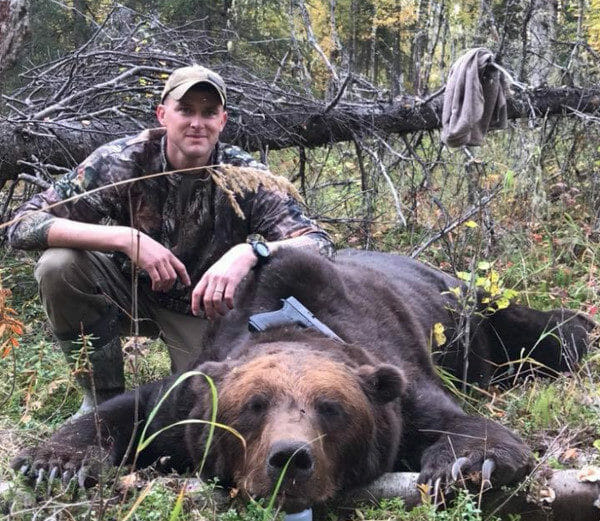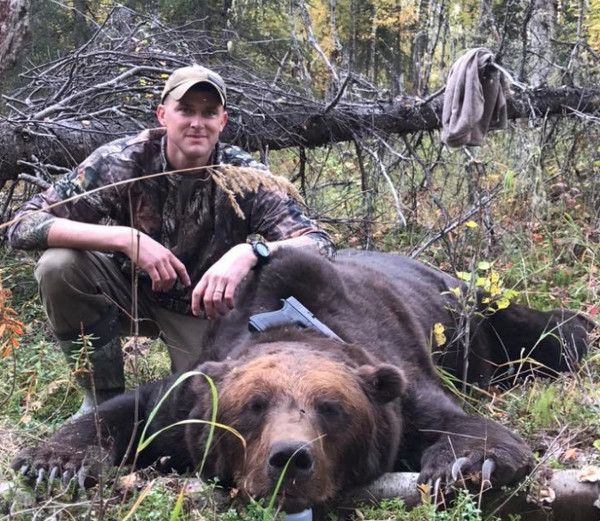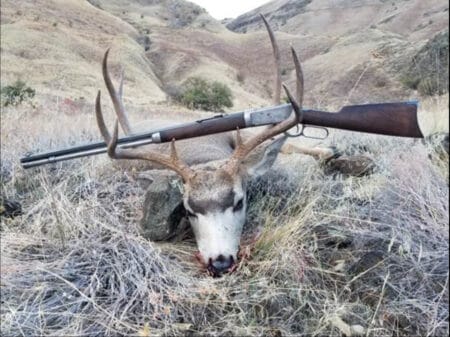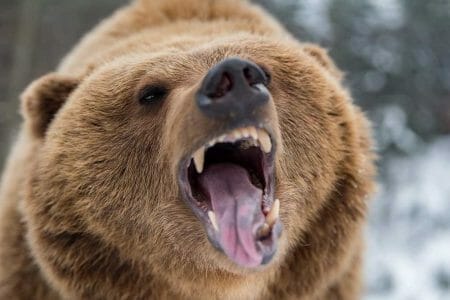
One of the significant advantages of using handguns to defend against bear attacks is that defense with a handgun is far more likely to result in a dead bear. This is a highly desirable result. Bears that attack humans should be killed. Killing aggressive bears is a way to condition the bear population to avoid humans.
The false premise implicit in the argument for non-lethal defenses against bears is that there are such small numbers of bears that killing a bear removes a valuable resource from the bear genetic pool. This view had some legitimacy about 1975-1980, when the population of grizzly bears in the lower 48 states was at its lowest level. This is no longer true.
Bear populations are on the rise all over the world. None of the three bears that live in North America has ever been endangered. Even the populations of grizzly bears that lived in the lower 48 states were only listed as “threatened”, not endangered. Today, we have at least three times as many grizzly bears in the lower 48 as in 1977. The grizzly bear population in the lower 48 is increasing at a significant rate. It is well over 2,000 bears and is probably approaching 3,000 grizzly bears.
When grizzly bears were not protected in the United States, only those bears that learned to avoid humans survived. By 1900, grizzly bears had become wary of humans and even dogs. Once bears were given artificial protection from humans, they started to lose their fear of humans. The grizzly bears in the lower 48 states kill humans at 30 times the rate per bear of grizzly bears in Alaska. The small population of grizzly bears in the lower 48 states is responsible for more human fatalities than the larger population of grizzly bears in Alaska. Yes, there are more people in the lower 48. However, grizzly bears tend to be found where people are not, in Montana, Idaho, and Wyoming. In Alaska, bears and humans often share the same territories.
The number of bears killed when they attack people is too small to have a significant impact on the bear population, except to remove excessively aggressive bears.
In the lower 48, there were 211 grizzly bears killed in defense of human life in the lower 48 states from 2003 to 2023. This averages about .64% of the bear population, or less than 10 bears per year. It is only 17% of the bear deaths recorded. During this period, the grizzly bear population has been steadily increasing.
Bear populations must be controlled, or they become pests and threats to human lives and human property. The most effective and common method for controlling bear populations is through regulated hunting. Approximately 5-15% of bear populations need to be harvested annually to maintain a stable population. In Michigan, harvests accounted for approximately 15% of the bear population from 1992 through 2023. During that period, the bear population has increased by about 10%. In Alaska, approximately 6.7% to 10.2% of brown bears were harvested on Kodiak Island, without reducing the bear population. The research paper suggested a harvest rate of 5.6 – 7.9%.
It is better to harvest bears that are hyper-aggressive than to harvest random bears during the hunting season. The number of bears to be harvested remains the same. Bears that are killed while attacking people mean there will be fewer bears to be killed by hunters. Bears that are unafraid of people should be taken out of the bear gene pool.
Stephen Herrero considered the selective harvest of black bears to be a reason black bears seldom attack humans. From Fatal Attacks by American Black Bear on People: 1900-2009, published 2011.
Eighth, given the strength and opportunistic predation by black bears one can ask why bears do not prey on people more often. Part of the answer may be that bears that try to or do prey on people are usually killed and removed from a population’s gene pool, decreasing the frequency of any genes the individual might have had that could contribute to predatory attacks on people. It is well known among dog breeders that it is possible to selectively breed for or against aggression. It is highly likely that this selection would also be possible for bears.
The same logic applies to Ursus arctos (brown bears, grizzly bears, and Kodiak bears). Grizzly bears became increasingly wary of humans by 1900, after about 50 years of relentless killing of aggressive bears by humans. The Lewis and Clark expedition journals show the members of the expedition developed a healthy respect for the dangers posed by grizzly bears. Even with muzzle-loading rifles and muskets, they killed 33 grizzly bears and wounded several others. None of the expedition members, who numbered about 50, was killed by a bear. There were several close encounters where men escaped from bears. None of the company was mauled. Muzzle loaders and horses doomed the grizzly in open areas.
With the common availability of cartridge arms after 1873, almost anyone could easily and effectively kill a grizzly bear if the bear was seen within a hundred yards. Aggressive bears were quickly killed. Those that avoided humans had a chance of survival.
It is not difficult to understand how bears could learn to fear people. Bears have some of the most sensitive noses in the animal kingdom. If a human kills a bear, the remains of the dead bear are going to be intermingled with the scent from the human or humans. The remains of a dead bear are highly attractive to other bears. An association of human scent with dead bears is well within the learning capacity of bears.
Another advantage of killing aggressive bears is that the bear cannot attack again or attack other people. Several people have been attacked by a bear on more than one occasion. Todd Orr is a classic example.
Once a bear has attacked a person, it is much more likely to attack another person. The chance of this happening is significantly reduced if the bear is shot with a firearm. If a projectile enters the thoracic or abdominal cavity, the bear will probably die. The time involved can vary from seconds to days. Even .22 rimfire bullets are likely to kill a bear if they penetrate either major body cavity.
Florida Court Strikes Down Concealed Carry Ban for 18-20 Year Olds
Urban Crime Spike “the Most Overlooked U.S. Crime Story in Recent Years”
About Dean Weingarten:
Dean Weingarten has been a peace officer, a military officer, was on the University of Wisconsin Pistol Team for four years, and was first certified to teach firearms safety in 1973. He taught the Arizona concealed carry course for fifteen years until the goal of Constitutional Carry was attained. He has degrees in meteorology and mining engineering, and retired from the Department of Defense after a 30 year career in Army Research, Development, Testing, and Evaluation.







Good Points
Having shot several bear with a couple different caliber handguns.
I can say yes they do work
ny gun is better than bear hands or a rock
In the past 3 to 4 years two grizzly sows with cubs each mauled two people in Montana putting their victims in hospitals. Each of these sows later killed a recreationist in the back country. In both cases traps were set, then removed within a few days. The sows were “startled”, the biologists said. Eventually each sow made a third attack (fortunately non-fatal) attack on a human. The third human victims finally motivated the agency biologists to do what they should have after the sows attacked their first victims… the sows were hunted down and killed. Grizzly cubs learn lots… Read more »